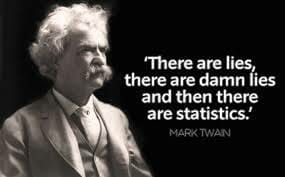You’ve probably seen them. Maybe you’ve even written them. We’re talking about the fundraising appeal letters that are based on statistics.
“Last year we served 10,000 meals to 500 people at 5 different locations.”
“We delivered a petition to the White House with 49,000 signatures demanding action.”
“We raised $120,000 to give college scholarships to students in our community.”
These numbers matter to us…but not to our donors. They may not even read them. They will not remember them.
Why Statistics Don’t Matter
The problem with statistics is not that they don’t reveal enough. (Even though they don’t. For example: Is 10,000 meals a lot or a little? How many people stayed hungry?)
The problem isn’t that the numbers can be fudged, either.
The real problem is that statistics don’t touch the heart.
Donors decide to give because you engage their emotions. They feel the pain of a child going hungry, the pride of a community sending its brightest high school students to college. Without an appeal to the heart, they will not even pay attention. Once you move their hearts, you will get a chance to make them nod their heads, too. But not until then.
Why Stories Work
As a species, we crave stories. Like water, like food, like the air we breathe, stories are vital to us. We listen to stories to make sense of the world around us. We shape the events of our own lives into narratives to give our lives meaning.
Stories stick in the memory. Have you ever tried to memorize a grocery list? After a certain length, it becomes impossible. You can try singing the list to a well-known tune, or counting it on your fingers, or alphabetizing it, and still you’re likely to come home and realize you’ve left several items sitting on the supermarket shelves. But if you give it even a little bit of narrative structure–“We’re having pasta tonight, so I need tomato sauce and salad fixings”–it becomes so much easier.
Telling stories to your donors makes the work you’re asking them to support tangible, meaningful, and memorable. If you touch the donor’s heart, you can even make it compelling. The donor will want to give!
3 Steps to Turn Your Statistics into Stories
What if you’re used to writing fundraising letters that are full of statistics? You can learn how to take what you have written in the past and turn it into storytelling your donors will love.
Let’s take one of the sentences full of numbers I mentioned above and transform it.
“Last year we served 10,000 meals to 500 people at 5 different locations.”
Step One: Talk about One Person
Telling the story of one person moves the heart more than citing large numbers. Research has proved this again and again. So, forget those 500 people. Talk about one person, and perhaps her family. Who is this person who ate your meals? What can you tell your donors that will help them get to know her?
Example: “Maria and Joe moved to this community ten years ago to take care of Maria’s elderly mom, who needed help paying her bills and even remembering to take her medication. Joe is the friendly face behind the wheel of the Route 89 bus every morning. Maria is trained as a nurse’s aide, and she puts those skills to work taking care of her mom and her two daughters who have been born in our town.”
Step Two: Show the Challenge That Person is Facing
What changed so that your one person and her family need help? What would life be like for them without that food your donor is providing?
“In the ten years they have lived here, the cost of renting a small two-bedroom apartment has gone up and up. Joe’s wages have not increased at all. Any time they have an unexpected expense–a child who needs to see the doctor, or a new walker to help Maria’s mom get from her bedroom to her front door–then that month, they run out of food. Without the help that you provide, Maria and Joe would go hungry to feed their daughters. And there still might not be enough to go around.”
Step Three: Explain How the Donor is Helping That Person Succeed
How has getting the food for free changed Maria’s life, and her husband and children’s lives? What difference does a donation make, in tangible terms?
“Because you cared about Maria and Joe and donated to this agency, their two girls go to school every day well-fed and ready to learn. Joe doesn’t have to be an absentee parent, working extra shifts. He can drive his bus and come home to his family. Maria doesn’t have to worry about being too faint from hunger, and she can give her loving attention to her mother’s needs.”
You can turn any statistic into a story if you are prepared. Make sure you give yourself enough time to collect stories and bank them so you can use whenever you need them. And remember to make the donor the hero of the story. When you tell donors a tale of what happens “because of you,” you will touch the heart and move donors to give.


